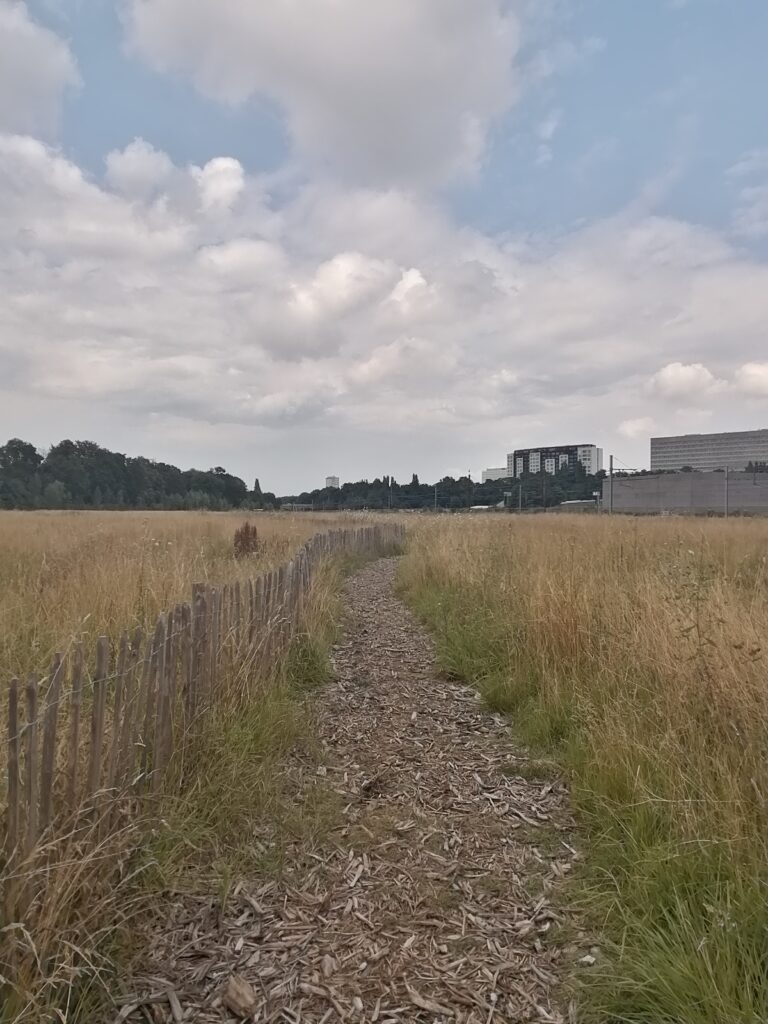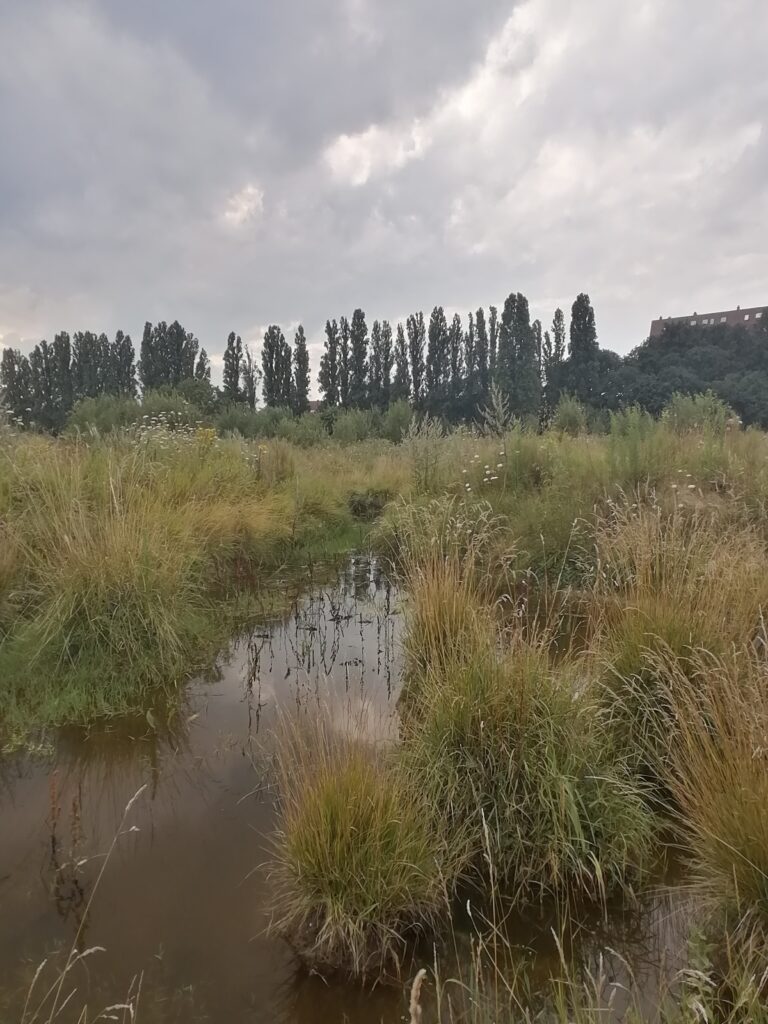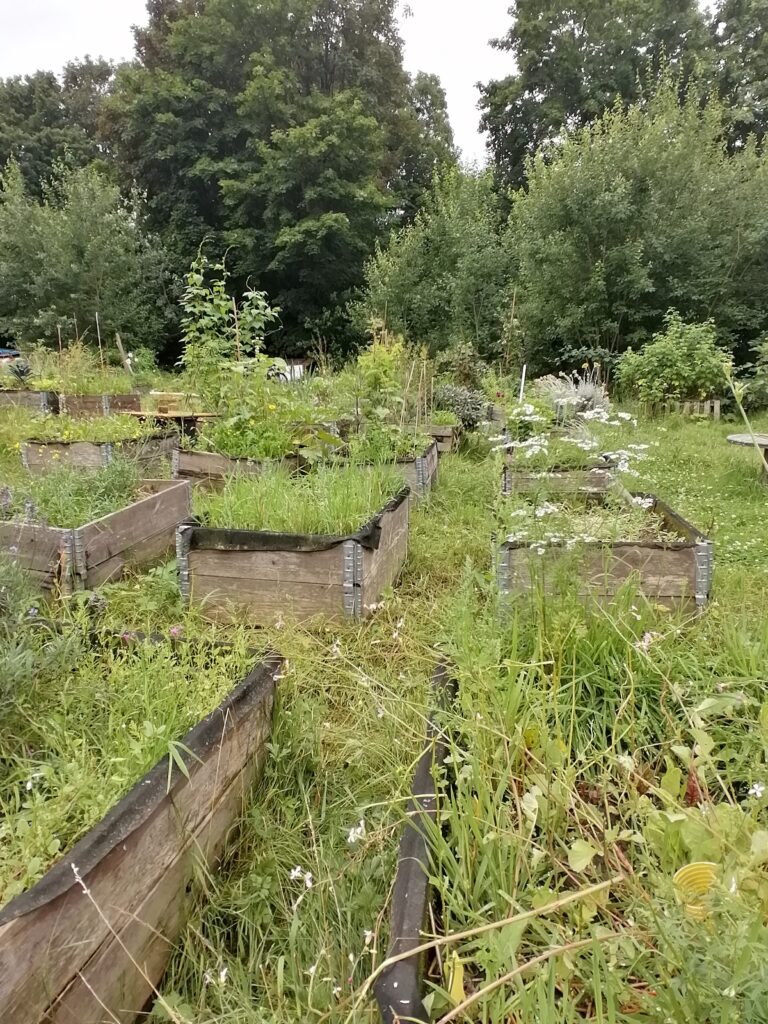What is it about?
In this article, we unravel the captivating story of the Josaphat wasteland in Brussels, exploring its untamed biodiversity and the perceptions of its inhabitants. Discover how this abandoned space is not only a remarkable ecological hotspot but also a living testament to the potential of UGI in creating sustainable and inclusive urban environments.
1. The importance of Urban Wasteland
Let’s embark on a journey to unlock the hidden potential within urban wastelands. These spaces act as green and blue corridors, promoting biodiversity within urban landscapes. They provide habitats for various species, including endangered ones, and are essential for their survival. And while introducing systems that resemble naturally occurring processes of water infiltration and purification.
Traditional planning approaches often view urban wastelands merely as local issues or potential sites for redevelopment. This oversight can lead to the gentrification of these spaces and the displacement of certain inhabitants, making them vulnerable to urban pressures.
One illustrative ecological example of such vulnerability is the displacement of native plant species due to gentrification and urban development. When urban wastelands are redeveloped without considering their ecological value, native plants that have adapted to these environments over time are often replaced with non-native species or removed entirely. This disrupts local ecosystems, reduces biodiversity, and can lead to imbalances in the urban environment, such as increased susceptibility to invasive species and decreased habitat availability for wildlife. Thus, failing to recognize the ecological importance of urban wastelands can have far-reaching consequences for the overall health and resilience of urban ecosystems.
2. The Josaphat Wasteland: a Hub
of Biodiversity
One captivating example of Urban Wasteland is the Josaphat wasteland, located in Brussels, Belgium.
This 24-hectare wasteland is a thriving and diverse ecosystem, serving as both a habitat and a vital corridor for a multitude of species. Unlike conventional green spaces such as officially designated parks, these wastelands boast an extraordinary wealth of rare and varied biodiversity. What sets them apart? Urban wastelands, like the Josaphat wasteland, are distinguished by their intricate tapestry of habitats. Within these spaces, one can encounter an array of microenvironments, including open spaces, decaying structures, patches of vegetation, and exposed soil areas. This rich diversity of microhabitats weaves together a mosaic of niches where a wide spectrum of species can flourish.

In contrast, traditional parks often offer more uniform and less complex environments, constraining the range of species that can find a suitable home there. Furthermore, urban wastelands frequently showcase microclimates that stand in stark contrast to the surrounding urban development. The presence of open spaces, hardscapes, and pockets of vegetation within these wastelands engenders distinctive localized climates. These unique microclimates have a magnetic effect on species specifically adapted to these conditions, further amplifying the overall biodiversity. In comparison, parks and forests typically maintain more consistent climate conditions throughout their expenses


Habitats and Microclimates of Josaphat Wasteland ©Fanny Téoule
3. The Challenges of Urban Wasteland Management
Managing the Josaphat wasteland in Brussels presents a complex and dynamic challenge. This wasteland, initially perceived as an empty space excluded from Brussels’ official green network, has undergone a remarkable transformation into a thriving urban ecosystem. However, its ever-changing nature makes effective management a continuous endeavour.
This wasteland is subject to multiple pressures, including pollution, vandalism, and encroachment. Its central location in an urban area means that it experiences significant human activity and potential disturbances. The lack of clear ownership and responsibility has historically led to insufficient maintenance and investment, exacerbating these challenges.

4. A Transformative Model of Urban Stewardship

The effective management of the Josaphat wasteland stands as a compelling exemplar of meeting these challenges. A holistic and participatory approach, enlisting the commitment of diverse stakeholders, has been pivotal in orchestrating its remarkable transformation.
Local communities, perceptive of the wasteland’s latent potential, have taken an active role in its stewardship and safeguarding. This active involvement has resulted in tangible outcomes, such as the establishment of vibrant community gardens and dedicated naturalist monitoring efforts. Non-governmental organizations have also lent their expertise to advance biodiversity conservation, championing the adoption of sustainable land use practices.
Collectively, this collaborative endeavor has wrought a profound metamorphosis in the Josaphat wasteland. It stands as a testament to the profound impact of shifting perspectives and embracing a shared vision. Through the incorporation of ecological, social, and economic considerations within its management plan, this erstwhile overlooked expanse has flourished into a thriving urban oasis. Its success resonates as a testament to the potential of harmonizing nature and community, bestowing benefits upon both.
5. The Ecological and Economic Value of Urban Wastelands
Research has revealed that wastelands play a vital role in supporting biodiversity, acting as crucial refuges for species that face threats in both urban and rural environments. These spaces provide numerous ecosystem services, such as carbon sequestration, air purification, and water retention. They are also cost-effective solutions to mitigate the effects of climate change by reducing the urban heat island effect and improving air quality.
Moreover, wastelands can provide economic benefits through the development of urban agriculture, eco-tourism, and green infrastructure. These activities can create jobs, generate income, and promote social inclusion while contributing to the preservation of biodiversity.
The case of the Josaphat wasteland in Brussels serves as a living testament to the potential inherent in urban wastelands. As it transforms from an overlooked space into a thriving urban ecosystem, it exemplifies the vital role these areas can play in the interplay of ecology, economics, and community engagement within our cities.
Conclusion
Urban wastelands, such as Josaphat, often overlooked and underestimated, possess immense value as urban assets. Beyond their neglected appearance, they wield the power to nurture biodiversity, furnish vital ecosystem services, and unveil economic prospects. The dynamic perceptions surrounding these spaces are undergoing transformation, ushering in a fresh era of recognition and appreciation for their role in forging sustainable and inclusive urban landscapes.
As our understanding evolves, we stand at a crossroads where urban wastelands can metamorphose into something even more extraordinary such as natural third places. These spaces offer a neutral ground for social interaction, community engagement, and knowledge exchange. Like bustling cafes or public squares, wastelands can foster a sense of belonging, bringing together diverse groups and sparking creativity. These versatile spaces stand as prime canvases for art installations, educational initiatives, or simply moments of reflection. Their transformation from forsaken plots to vibrant hubs not only enriches our urban environments but also reshapes our collective identity.
By embracing a comprehensive and collaborative approach, we can deftly navigate the complexities of urban wasteland management. This approach ensures that these spaces retain their ecological integrity, provide spaces for community activities, and bolster economic growth. This symbiotic relationship between nature, society, and economy births a legacy that resonates through the ages.
The journey from overlooked wastelands to thriving places requires a commitment to embracing change and harnessing innovation. As we march forward, let’s unlock the latent potential of these urban sanctuaries, ushering in a new era of connectivity, sustainability, and shared growth. In doing so, we pave the way for a more vibrant and harmonious urban future where nature and society thrive harmoniously.
Key Take-aways
- Biodiversity sanctuaries: Urban wastelands support species and act as crucial corridors, aiding endangered animals and plants to thrive within cities.
- Perception drives action: Public views influence how wastelands are managed – positive perceptions encourage conservation, while negative views may lead to neglect or redevelopment.
- Nature in the Cities: Wastelands offer space for education and urban farming, connecting nature and society for a greener and sustainable urban future.
Do you want ot know more?
- Josaphat website (in french)
- More about Wasteland: Berlin urban wasteland for the local communities
- Potential of Waste: Wasteland Exhibition
- Urban Nature documentary: Natura Urbana
And read our previous blog article on the Perception of Nature: Welcoming Wild Things